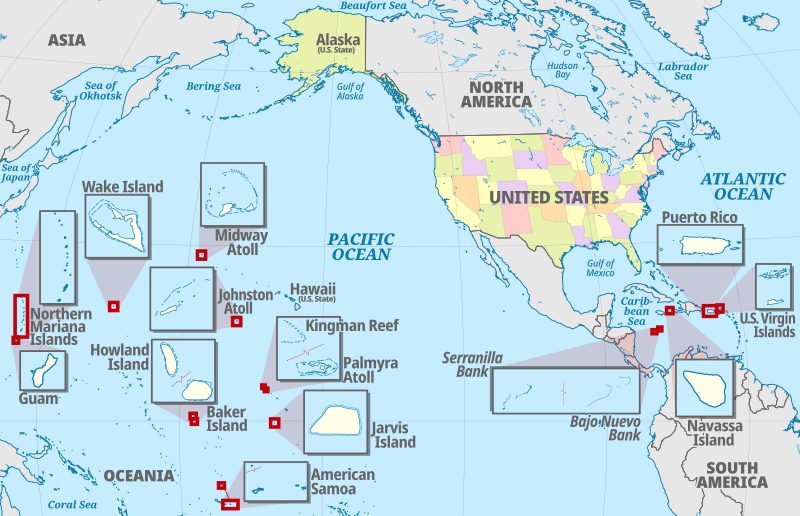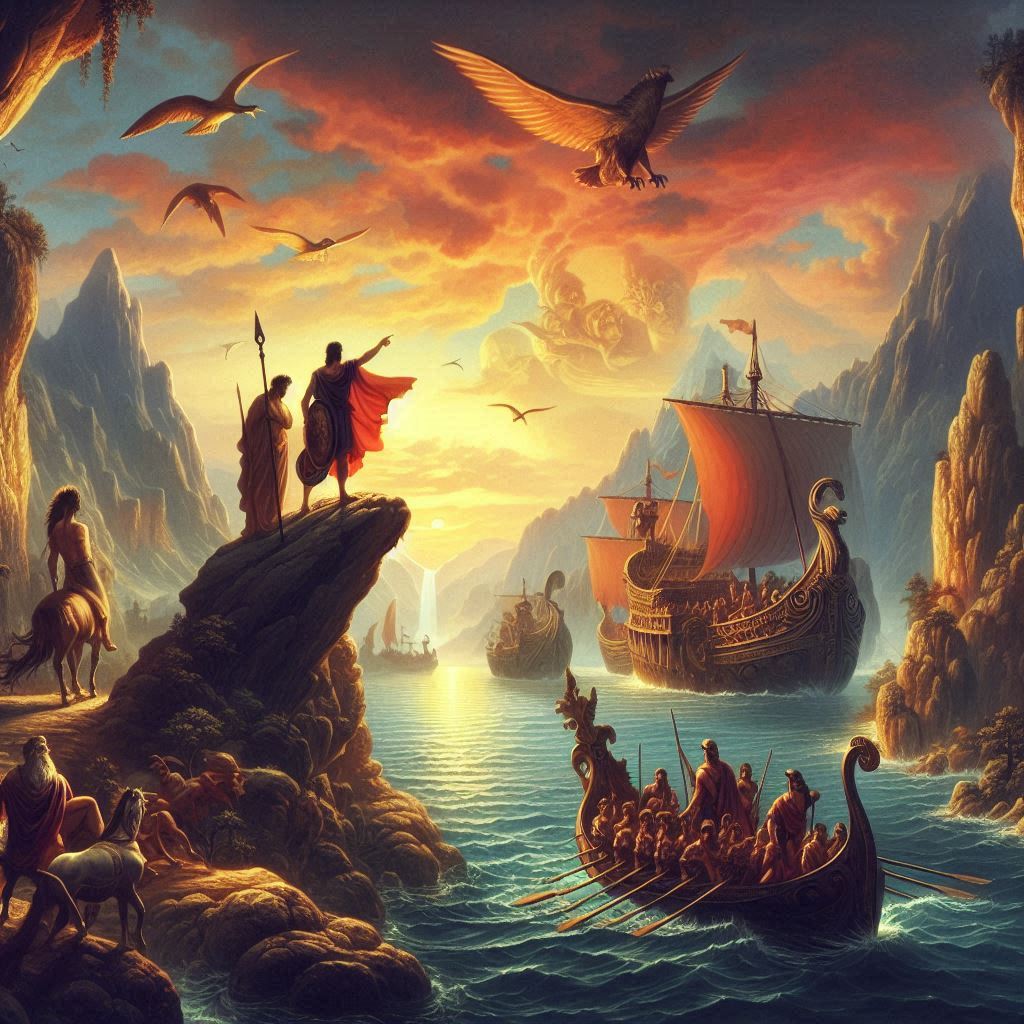The United States has a diverse and intricate history that spans centuries, beginning with its colonization by European powers in the late 15th century. Over time, these colonies evolved, with settlers establishing distinct communities along the Atlantic seaboard. By the 18th century, tensions arose between the colonies and the British Crown, leading to a revolutionary movement that culminated in the Declaration of Independence in 1776. Following the American Revolution, the young nation grappled with establishing a stable government, resulting in the drafting of the U.S. Constitution and the Bill of Rights.
The 19th century was a period of territorial expansion and internal conflict. The United States acquired vast territories through purchases and treaties, but the expansion exacerbated tensions over slavery’s extension into new regions. This discord eventually ignited the Civil War, a conflict that tested the nation’s cohesion and culminated in the abolition of slavery. The post-war Reconstruction era aimed to integrate freed slaves into society, but racial tensions persisted.
As the 19th century gave way to the 20th, the United States experienced profound industrialization, immigration, and urban growth. The nation emerged as a global power, intervening in international conflicts and acquiring overseas territories. However, internal challenges, such as economic disparities and social inequality, prompted Progressive Era reforms aimed at addressing these issues. The 20th century also witnessed the United States’ involvement in two world wars, shaping its foreign policy and global influence.
Following World War II, the United States became a superpower engaged in the Cold War rivalry with the Soviet Union. This era influenced domestic policies, technological advancements, and international relations. The latter part of the 20th century saw significant social and cultural transformations, from civil rights movements challenging racial segregation to economic booms and political shifts.
Into the 21st century, the United States continues to navigate a complex landscape of global challenges, including terrorism, economic fluctuations, and political divisions. Nevertheless, the nation’s history reflects enduring values of democracy, liberty, and opportunity, shaping its identity as a beacon of freedom and innovation.
Indigenous inhabitants
The story of the indigenous inhabitants of what is now known as the United States is one that spans thousands of years, encompassing a rich tapestry of cultures, traditions, and civilizations. Long before the arrival of European explorers and settlers, diverse Native American communities thrived across the North American continent, each with its unique customs, languages, and social structures.
Archaeological evidence suggests that indigenous peoples have inhabited North America for at least 15,000 years, with some estimates suggesting an even longer presence. These early inhabitants were hunter-gatherers who relied on the land’s resources for their survival, developing intricate relationships with the natural environment and the species that inhabited it. Over time, these early societies began to cultivate plants such as maize, beans, and squash, leading to the development of more settled agricultural communities.
By the time European explorers began arriving in the late 15th and early 16th centuries, the North American continent was home to hundreds of distinct indigenous cultures, each with its own unique traditions, beliefs, and social structures. From the Inuit communities of the Arctic to the Pueblo peoples of the Southwest and the Iroquois Confederacy of the Northeast, indigenous societies had developed complex systems of governance, trade, and cultural exchange.
One of the defining features of indigenous cultures in North America was their deep spiritual connection to the land. Many indigenous peoples believed that the land was sacred and that they had a responsibility to steward and protect it for future generations. This reverence for the land was reflected in their religious practices, rituals, and ceremonies, which often centered around natural phenomena such as the sun, moon, stars, and animals.
Social structure within indigenous communities varied widely, with some societies organized into complex chiefdoms or confederacies, while others were more loosely organized into bands or tribes. In many indigenous cultures, leadership was often based on merit, with individuals earning respect and influence through acts of bravery, wisdom, or spiritual insight. Elders played a crucial role in many indigenous societies, serving as repositories of knowledge, wisdom, and cultural traditions.
Trade and inter-tribal relations were also significant aspects of indigenous life. Across North America, extensive trade networks connected distant communities, facilitating the exchange of goods, resources, and ideas. These trade networks played a crucial role in the spread of cultural practices, technological innovations, and social norms across the continent.
The arrival of European explorers and settlers in the late 15th and early 16th centuries marked a profound and devastating turning point for indigenous peoples. Initial encounters between indigenous communities and European explorers were often characterized by curiosity, trade, and cultural exchange. However, as European colonies began to establish a more permanent presence in North America, tensions between indigenous peoples and European settlers escalated.
One of the most significant consequences of European colonization was the introduction of diseases such as smallpox, measles, and influenza, to which indigenous populations had no immunity. These diseases decimated indigenous communities, leading to widespread death, displacement, and societal upheaval. In addition to disease, indigenous peoples faced violence, forced relocation, and cultural assimilation as European powers sought to assert control over the continent.
Throughout the 17th and 18th centuries, European colonization continued to expand, leading to the gradual encroachment and displacement of indigenous communities from their ancestral lands. Treaties and agreements between European powers and indigenous nations often proved to be temporary and unenforceable, as the relentless drive for land and resources continued unabated.
By the 19th century, the United States government had adopted a policy of Indian removal, forcibly relocating indigenous peoples from their ancestral lands to designated reservation territories. The Indian Removal Act of 1830, signed into law by President Andrew Jackson, authorized the forced removal of thousands of Native Americans from the Southeast to territories west of the Mississippi River, leading to the tragic Trail of Tears and the loss of countless lives.
Despite centuries of adversity, indigenous peoples have persevered, maintaining their cultural traditions, languages, and spiritual practices in the face of profound challenges. In recent decades, there has been a renewed interest and appreciation for indigenous cultures, traditions, and contributions to American society. Efforts to preserve and revitalize indigenous languages, traditions, and cultural practices have gained momentum, reflecting a growing recognition of the importance of indigenous knowledge and perspectives.
Colonial Period (1607-1776)
The Colonial Period in American history, spanning from 1607 to 1776, represents a formative era characterized by the establishment of English colonies, cultural exchange, territorial expansion, and growing tensions with Great Britain. This period laid the groundwork for the development of the United States, shaping its political, economic, and social institutions in profound ways.
The Colonial Period began in earnest with the establishment of Jamestown, Virginia, in 1607, the first permanent English settlement in North America. Founded by the Virginia Company of London, Jamestown initially faced numerous challenges, including disease, famine, and conflict with neighboring Native American tribes. However, the discovery of tobacco as a cash crop in the early 17th century transformed the colony’s fortunes, leading to increased economic prosperity and population growth.
Throughout the 17th century, English settlers established additional colonies along the eastern seaboard, including Plymouth, Massachusetts (1620), Massachusetts Bay (1630), Rhode Island (1636), Connecticut (1636), Maryland (1634), and the Carolinas (1663). Each colony developed its own unique economic, political, and social characteristics, reflecting a combination of English heritage, local conditions, and cultural influences.
The economy of the colonial period was primarily agrarian, with tobacco, rice, indigo, and later, cotton, serving as staple cash crops in the southern colonies. In contrast, the northern colonies developed diverse economies based on agriculture, trade, fishing, and shipbuilding. The growth of trade within the colonies and with other European powers fueled economic development, leading to the emergence of port cities such as Boston, New York, Philadelphia, and Charleston as centers of commerce and industry.
As the colonies expanded and prospered, they developed distinct political institutions and governance structures. Most colonies established representative assemblies or colonial legislatures, such as the House of Burgesses in Virginia and the General Court in Massachusetts, to govern local affairs and levy taxes. However, these colonial governments operated within the framework of British colonial policy, which granted significant authority to royal governors appointed by the Crown.
Throughout the 17th and 18th centuries, the relationship between the colonies and Great Britain evolved, shaped by a combination of economic interests, cultural ties, and growing tensions over colonial autonomy and self-governance. The policy of “salutary neglect” adopted by successive British governments allowed the colonies a considerable degree of self-rule and economic freedom, contributing to their growth and prosperity. However, this period of relative autonomy also fostered a sense of independence and self-confidence among the colonists, laying the groundwork for future conflicts with the British Crown.
By the mid-18th century, tensions between the colonies and Great Britain began to escalate, fueled by a series of political, economic, and social factors. The French and Indian War (1754-1763), fought between Great Britain and France for control of North America, resulted in a decisive British victory but left the British Empire burdened with a massive war debt. In response, the British government sought to raise revenue and assert greater control over the colonies through a series of new taxes and policies, such as the Stamp Act (1765), Townshend Acts (1767), and Intolerable Acts (1774).
These acts sparked widespread resistance and protest among the colonists, who viewed them as violations of their rights and liberties as British subjects. The phrase “no taxation without representation” became a rallying cry for colonial opposition to British policies, reflecting the growing sentiment that the colonies should have a voice in their own governance. In response to these grievances, colonial leaders organized boycotts, protests, and acts of civil disobedience, such as the Boston Tea Party (1773), to challenge British authority and assert their rights.
The growing tensions between the colonies and Great Britain culminated in the outbreak of the American Revolution in 1775. On April 19, colonial militia clashed with British troops at the Battles of Lexington and Concord, marking the beginning of the revolutionary war for independence. Over the next eight years, the thirteen colonies waged a protracted and bloody struggle against the might of the British Empire, enduring hardships, sacrifices, and setbacks to secure their freedom and sovereignty.
On July 4, 1776, the Second Continental Congress adopted the Declaration of Independence, proclaiming the thirteen colonies’ independence from Great Britain and establishing the United States of America. The Declaration articulated the principles of liberty, equality, and self-determination that would come to define the new nation’s identity and aspirations. The Revolutionary War continued for several more years, culminating in the Treaty of Paris in 1783, which formally ended hostilities and recognized the sovereignty of the United States.
American Revolution (1775-1783)
The American Revolution, spanning from 1775 to 1783, was a pivotal and transformative event in the history of the United States, marking the birth of a new nation founded on principles of liberty, democracy, and self-determination. This revolutionary struggle against British colonial rule was rooted in a complex web of political, economic, social, and ideological factors that culminated in the thirteen colonies’ quest for independence.
The seeds of the American Revolution were sown in the decades leading up to the outbreak of hostilities in 1775. Tensions between the colonies and Great Britain had been escalating for years, fueled by a series of controversial policies, taxes, and acts imposed by the British government. The Stamp Act of 1765, the Townshend Acts of 1767, and the Intolerable Acts of 1774 were perceived by the colonists as infringements on their rights and liberties as British subjects, leading to widespread opposition and resistance.
The phrase “no taxation without representation” became a rallying cry for colonial discontent, reflecting the growing sentiment that the colonies should have a voice in their own governance and affairs. Colonial leaders, including Samuel Adams, Patrick Henry, John Adams, and George Washington, emerged as vocal critics of British policies, organizing boycotts, protests, and acts of civil disobedience to challenge British authority and assert colonial rights.
The outbreak of hostilities on April 19, 1775, marked the beginning of the Revolutionary War, as colonial militia clashed with British troops at the Battles of Lexington and Concord. This initial confrontation ignited a broader conflict between the thirteen colonies and Great Britain, with both sides mobilizing forces and resources for a protracted and bloody struggle.
In the early years of the war, the balance of power shifted back and forth as both sides experienced victories and setbacks. The Continental Army, led by General George Washington, faced significant challenges, including a lack of resources, training, and organization. However, strategic victories at the Battles of Saratoga in 1777 proved to be a turning point in the war, leading to increased French support and intervention on behalf of the American cause.
The entry of France into the conflict in 1778 significantly altered the dynamics of the war, providing the Continental Army with much-needed military assistance, supplies, and financial support. Over the next few years, French and American forces collaborated to launch a series of campaigns and offensives against British forces, culminating in the decisive Siege of Yorktown in 1781.
The Siege of Yorktown, which lasted from September to October 1781, resulted in a decisive victory for the combined American and French forces, effectively ending major combat operations in the Revolutionary War. British General Charles Cornwallis surrendered his army to General George Washington, marking the symbolic and practical end of British colonial rule in America.
Following the victory at Yorktown, peace negotiations began between the United States and Great Britain, culminating in the Treaty of Paris in 1783. The treaty formally recognized the independence of the United States and established the boundaries of the new nation, extending from the Atlantic Ocean to the Mississippi River.
The American Revolution had profound and far-reaching consequences for the United States, Great Britain, and the world at large. For the United States, the war established the foundations of a new nation, grounded in principles of liberty, democracy, and self-determination. The Declaration of Independence, adopted by the Second Continental Congress on July 4, 1776, articulated these principles and served as a rallying cry for freedom and independence.
The Revolutionary War also laid the groundwork for the development of a unique American identity, characterized by a commitment to individual rights, civic participation, and democratic governance. The Articles of Confederation, adopted in 1781, provided the newly independent states with a framework for cooperation and governance, albeit with significant limitations and shortcomings.
Recognizing the need for a more robust and effective central government, delegates from twelve states convened in Philadelphia in 1787 to draft the United States Constitution. Ratified in 1788, the Constitution established a federal system of government with a separation of powers, checks and balances, and a Bill of Rights guaranteeing individual liberties and protections.
Constitutional Period (1787-1800)
The Constitutional Period, spanning from 1787 to 1800, was a crucial era in American history that witnessed the creation, ratification, and implementation of the United States Constitution. This period was marked by intense debates, political maneuvering, and ideological conflicts as the newly independent nation sought to establish a stable and effective system of government.
Following the conclusion of the Revolutionary War and the signing of the Treaty of Paris in 1783, the United States faced a myriad of challenges, including economic instability, political disunity, and social unrest. The Articles of Confederation, the nation’s first governing document, proved to be inadequate and insufficient, lacking the necessary authority to address these pressing issues effectively.
Recognizing the shortcomings of the Articles of Confederation, delegates from twelve states convened in Philadelphia in May 1787 to draft a new constitution. The Constitutional Convention, presided over by George Washington, brought together some of the nation’s most influential political thinkers, including James Madison, Benjamin Franklin, Alexander Hamilton, and Gouverneur Morris, among others.
The delegates faced a daunting task, balancing competing interests, regional concerns, and ideological differences to create a framework for a federal system of government that would protect individual liberties, promote the general welfare, and ensure the nation’s long-term stability and prosperity. After months of intense debate and negotiation, the delegates finally reached a compromise, producing a draft constitution that established a federal system of government with a separation of powers, checks and balances, and a system of representation that balanced the interests of large and small states.
The proposed Constitution, however, faced significant opposition from Anti-Federalists, who feared that a strong central government would infringe on individual liberties and states’ rights. To address these concerns, the Federalist Papers were published, a series of essays written by Alexander Hamilton, James Madison, and John Jay, advocating for the ratification of the Constitution. These essays, which articulated the principles and rationale behind the proposed Constitution, played a crucial role in swaying public opinion and securing ratification in key states.
On September 17, 1787, the Constitutional Convention concluded its deliberations, and the delegates signed the United States Constitution, sending it to the states for ratification. Over the next few months, a heated national debate ensued, as Federalists and Anti-Federalists clashed over the merits and shortcomings of the proposed Constitution.
By the summer of 1788, nine states had ratified the Constitution, meeting the requirement for its adoption. On June 21, 1788, New Hampshire became the ninth state to ratify the Constitution, and the new federal government was officially inaugurated on March 4, 1789. George Washington was unanimously elected as the nation’s first President, and the first session of Congress convened in New York City, then the temporary capital of the United States.
The implementation of the Constitution during the 1790s marked a period of significant political, economic, and social transformation for the United States. The new federal government faced numerous challenges, including establishing its authority, addressing the nation’s financial obligations, and navigating foreign relations with European powers.
One of the most pressing challenges confronting the new government was the nation’s economic instability. Under the leadership of Alexander Hamilton, the first Secretary of the Treasury, Congress enacted a series of economic policies aimed at stabilizing the nation’s finances, promoting economic growth, and establishing the federal government’s authority. Hamilton’s financial plan included the assumption of state debts, the creation of a national bank, and the imposition of tariffs and excise taxes to generate revenue.
The 1790s also witnessed the emergence of a distinct two-party system, characterized by competing visions for the nation’s future. The Federalist Party, led by Alexander Hamilton and John Adams, advocated for a strong central government, commercial development, and close ties with Great Britain. In contrast, the Democratic-Republican Party, led by Thomas Jefferson and James Madison, championed states’ rights, agrarianism, and closer relations with France.
Foreign relations during the 1790s were dominated by the ongoing conflict between Great Britain and France, as the two European powers waged a global struggle for supremacy. The United States sought to navigate this treacherous international landscape, maintaining its neutrality while safeguarding its interests and sovereignty. However, tensions with Great Britain escalated, leading to incidents such as the XYZ Affair and the Quasi-War, a undeclared naval conflict in the Caribbean.
Early Republic (1800-1848)
The Early Republic period, spanning from 1800 to 1848, was a transformative era in American history characterized by territorial expansion, democratic experimentation, economic growth, and profound social change. Building on the foundations established during the Constitutional Period, the United States navigated the challenges and opportunities of nation-building, territorial expansion, and the complexities of democracy in a rapidly changing world.
The election of 1800 marked a significant turning point in American politics, as Thomas Jefferson and the Democratic-Republicans defeated John Adams and the Federalists, ushering in a new era of Jeffersonian democracy. The peaceful transition of power between rival political parties demonstrated the stability and resilience of the young republic’s democratic institutions, setting a precedent for future generations.
Jefferson’s presidency, often referred to as the “Revolution of 1800,” emphasized agrarianism, limited government, and states’ rights. His administration prioritized territorial expansion, as evidenced by the Louisiana Purchase in 1803, which nearly doubled the size of the United States and opened vast new territories for settlement and development. This acquisition, however, raised questions about the expansion of slavery and the future of the Union, setting the stage for future conflicts and tensions.
The early 19th century also witnessed the emergence of distinct regional identities and economic systems within the United States. The North, characterized by industrialization, commerce, and urbanization, embraced market capitalism and technological innovation. In contrast, the South remained predominantly agrarian, relying on plantation agriculture and slave labor to produce staple crops such as cotton, tobacco, and sugar.
The growth of the cotton economy and the institution of slavery in the South had profound and far-reaching consequences for the nation’s political, economic, and social fabric. The Missouri Compromise of 1820 and the Compromise of 1850 attempted to address the growing tensions between the North and South over issues of slavery, representation, and territorial expansion. However, these legislative compromises ultimately failed to resolve the underlying conflicts, leading to increased sectionalism and polarization.
The early 19th century also witnessed significant advancements in transportation and communication, which facilitated westward expansion, economic development, and social mobility. The construction of canals, roads, and, most notably, the Erie Canal in 1825, connected the Eastern seaboard with the interior of the continent, facilitating trade, migration, and settlement. The advent of the telegraph in the 1840s further accelerated the flow of information and connected distant regions of the country, fostering a sense of national unity and identity.
The presidency of Andrew Jackson (1829-1837) marked another pivotal moment in the Early Republic era, as his administration championed populism, westward expansion, and the expansion of executive power. Jackson’s policies, including the Indian Removal Act of 1830 and the Nullification Crisis of 1832, reflected his commitment to states’ rights, manifest destiny, and the interests of white settlers and landowners.
The Trail of Tears, resulting from the forced removal of Native American tribes, exemplified the injustices and tragedies inflicted upon indigenous peoples during this period. The Indian Removal Act led to the displacement and loss of ancestral lands for thousands of Native Americans, resulting in hardship, suffering, and cultural devastation.
The mid-19th century also witnessed the emergence of social reform movements aimed at addressing the nation’s moral, social, and economic challenges. The Second Great Awakening, a religious revival movement, inspired a wave of social activism, including efforts to abolish slavery, promote temperance, and improve conditions for women and workers. Figures such as Frederick Douglass, Harriet Tubman, Sojourner Truth, and Elizabeth Cady Stanton became prominent voices advocating for justice, equality, and reform.
Civil War and Reconstruction (1861-1877)
The Civil War and Reconstruction era, spanning from 1861 to 1877, represents one of the most tumultuous and transformative periods in American history, characterized by profound social, political, and economic upheaval. The conflict between the Northern and Southern states over the institution of slavery, states’ rights, and the future of the Union culminated in a devastating civil war that tested the nation’s commitment to its founding principles and ideals.
By the mid-19th century, the United States was deeply divided along regional, economic, and ideological lines. The North, characterized by industrialization, urbanization, and a growing commitment to abolitionism, clashed with the South, where plantation agriculture, slave labor, and states’ rights dominated the political and social landscape. The election of Abraham Lincoln, a staunch opponent of slavery’s expansion into the western territories, in 1860, precipitated a political crisis that culminated in the secession of eleven Southern states and the formation of the Confederate States of America.
The outbreak of hostilities at Fort Sumter, South Carolina, in April 1861, marked the beginning of the Civil War, a protracted and bloody conflict that pitted brother against brother and tore the nation apart. Over the next four years, the Union and Confederate armies waged a brutal struggle for control of the southern states, resulting in unprecedented casualties, destruction, and suffering. Battles such as Gettysburg, Antietam, and Shiloh became synonymous with the war’s ferocity and human cost.
The Emancipation Proclamation, issued by President Lincoln in 1863, transformed the Civil War into a moral crusade against slavery, promising freedom to enslaved African Americans in Confederate-held territory. This landmark executive order, along with the enactment of the 13th Amendment in 1865, abolished slavery throughout the United States, marking a pivotal moment in the nation’s history and the fulfillment of the war’s most profound objective.
As the war drew to a close in 1865, the nation faced the monumental task of healing its wounds, rebuilding its shattered economy, and integrating millions of newly freed African Americans into society. Reconstruction, the period following the Civil War, sought to address these challenges by establishing a new social order based on freedom, equality, and civil rights for all citizens.
The Reconstruction era witnessed significant advancements in civil rights and political participation for African Americans, as evidenced by the passage of the 14th and 15th Amendments, which granted citizenship rights and suffrage to formerly enslaved individuals. The Freedmen’s Bureau, established by Congress in 1865, provided essential services, including education, healthcare, and legal assistance, to millions of newly freed African Americans, fostering social mobility and economic empowerment.
However, Reconstruction’s promise of racial equality and social justice was short-lived, as white supremacist groups, such as the Ku Klux Klan, emerged to undermine and overturn the gains made by African Americans during this period. The rise of “Black Codes,” Jim Crow laws, and systemic discrimination and violence perpetuated racial segregation, disenfranchisement, and economic exploitation, particularly in the South.
The Compromise of 1877, which resolved the contested presidential election of 1876, effectively ended Reconstruction and ushered in a new era of racial segregation, disenfranchisement, and institutionalized racism. The withdrawal of federal troops from the South, combined with the Supreme Court’s decisions in cases such as Plessy v. Ferguson (1896), perpetuated racial segregation and inequality for decades to come.
Industrialization and Gilded Age (1877-1900)
The period between 1877 and 1900 in the United States, often referred to as the Gilded Age, was a time of rapid industrialization, technological innovation, economic growth, and profound social change. Following the end of Reconstruction, the nation embarked on a period of unprecedented expansion and development, transforming the American landscape and shaping the modern industrial economy.
The Gilded Age was characterized by the rise of big business, monopolies, and trusts, as entrepreneurs and industrialists such as John D. Rockefeller, Andrew Carnegie, and J.P. Morgan amassed vast wealth and power. These titans of industry revolutionized manufacturing, transportation, and communication, laying the foundations for the modern American economy. The development of the transcontinental railroad, the expansion of the telegraph and telephone networks, and the proliferation of steel production fueled economic growth, urbanization, and westward expansion.
However, the rapid industrialization and economic growth of the Gilded Age were accompanied by significant social, economic, and political challenges. The era witnessed widespread poverty, income inequality, labor exploitation, and social unrest as industrial workers, immigrants, and farmers struggled to share in the benefits of economic prosperity. The rise of urbanization and industrialization led to overcrowded cities, substandard housing, inadequate sanitation, and public health crises, exacerbating social inequalities and disparities.
The labor movement emerged as a powerful force during the Gilded Age, as workers organized strikes, protests, and labor unions to demand better wages, working conditions, and rights. The Knights of Labor, the American Federation of Labor (AFL), and the Industrial Workers of the World (IWW) became prominent labor organizations advocating for workers’ rights, collective bargaining, and social justice. Strikes such as the Haymarket Riot (1886), the Homestead Strike (1892), and the Pullman Strike (1894) highlighted the tensions and conflicts between labor and capital, as workers fought against exploitation, oppression, and economic inequality.
The Gilded Age also witnessed significant advancements in technology, science, and innovation that transformed everyday life and reshaped society. The invention of the light bulb, the telephone, and the phonograph by Thomas Edison; the development of the motion picture camera by the Lumière brothers; and the proliferation of electric power, automobiles, and consumer goods revolutionized communication, transportation, and leisure activities. These technological advancements fostered economic growth, increased productivity, and improved living standards, albeit unevenly distributed across society.
The era also witnessed significant demographic changes as millions of immigrants from Europe, Asia, and Latin America arrived in the United States seeking economic opportunity, religious freedom, and political asylum. The influx of immigrants fueled population growth, cultural diversity, and urbanization, as newcomers settled in cities, established communities, and contributed to the nation’s economic, social, and cultural fabric. However, the rise of nativism, xenophobia, and anti-immigrant sentiment led to discriminatory laws, restrictions on immigration, and social tensions as native-born Americans grappled with the challenges and opportunities of demographic change.
The Gilded Age was also characterized by political corruption, cronyism, and the influence of big business on government policies and regulations. The era witnessed the rise of political machines, such as Tammany Hall in New York City, that wielded power and influence through patronage, bribery, and voter fraud. The spoils system, the lack of campaign finance regulations, and the influence of lobbyists and special interests undermined democratic governance, accountability, and transparency, leading to public distrust and disillusionment with political institutions.
In response to the challenges and inequalities of the Gilded Age, progressive reformers and activists advocated for social justice, political reform, and economic regulation to address the excesses of industrialization and capitalism. Figures such as Jane Addams, W.E.B. Du Bois, Ida B. Wells, and Theodore Roosevelt championed progressive causes, including labor rights, women’s suffrage, civil rights, consumer protection, and environmental conservation. The Progressive Era, which emerged in the early 20th century, sought to address the social, economic, and political challenges of the Gilded Age through legislation, advocacy, and grassroots activism.
Progressive Era (1890-1920)
The Progressive Era, spanning from 1890 to 1920, was a period of significant social, political, and economic reform in the United States, characterized by a widespread commitment to addressing the social injustices, economic inequalities, and political corruption that had emerged during the Gilded Age. Progressive reformers and activists sought to address the challenges of industrialization, urbanization, and modernization by advocating for social justice, political reform, and economic regulation to create a more equitable and democratic society.
The Progressive Movement emerged in response to the perceived failures and excesses of the Gilded Age, including widespread poverty, income inequality, labor exploitation, political corruption, and social unrest. Progressive reformers, often referred to as “muckrakers,” exposed and criticized these social ills through investigative journalism, literature, and advocacy, raising public awareness and galvanizing support for reform efforts. Figures such as Upton Sinclair, Ida Tarbell, Lincoln Steffens, and Jacob Riis exposed the abuses of big business, political corruption, and social inequality through their writings and investigative reporting, sparking public outrage and demand for change.
Progressive reformers targeted various areas for reform, including political corruption, economic regulation, social welfare, labor rights, women’s suffrage, and civil rights. The era witnessed significant legislative achievements, such as the establishment of the Federal Reserve System, the enactment of antitrust laws, the implementation of labor protections, and the passage of constitutional amendments, including the 16th, 17th, 18th, and 19th Amendments, which addressed taxation, direct election of senators, prohibition, and women’s suffrage, respectively.
The Progressive Era also witnessed the emergence of social reform movements aimed at addressing the social, economic, and political challenges of the time. The settlement house movement, led by figures such as Jane Addams and Ellen Gates Starr, sought to alleviate poverty, improve living conditions, and promote social integration through community-based initiatives, educational programs, and social services. The establishment of Hull House in Chicago in 1889 became a model for urban reform and community development, providing essential services and opportunities for immigrant communities and working-class families.
Labor reform was another critical focus of the Progressive Era, as workers organized strikes, protests, and labor unions to demand better wages, working conditions, and rights. The Triangle Shirtwaist Factory fire in 1911, which resulted in the deaths of 146 garment workers, highlighted the need for workplace safety regulations, labor protections, and enforcement mechanisms to protect workers’ rights and prevent future tragedies. Progressive reformers and labor activists, including Samuel Gompers, Mother Jones, and Eugene V. Debs, advocated for labor rights, collective bargaining, and social justice, leading to significant legislative reforms, including the enactment of child labor laws, minimum wage regulations, and workers’ compensation programs.
The Progressive Era also witnessed significant advancements in women’s rights and suffrage, as activists and reformers advocated for gender equality, political representation, and social justice. Figures such as Susan B. Anthony, Elizabeth Cady Stanton, and Alice Paul championed women’s suffrage, leading to the passage of the 19th Amendment in 1920, which granted women the right to vote. The women’s suffrage movement, alongside other social reform movements, contributed to broader efforts to expand civil rights, promote social justice, and foster democratic participation.
However, the Progressive Era was not without its limitations and contradictions, as the movement’s achievements were often constrained by racial, ethnic, and class divisions. Progressive reformers, while advocating for social justice and political reform, often perpetuated racial inequalities, discriminatory policies, and exclusionary practices that marginalized African Americans, immigrants, and other minority groups. The rise of eugenics, nativism, and restrictive immigration policies reflected broader societal attitudes and prejudices that undermined the era’s progressive ideals and principles.
World Wars and Interwar Period (1914-1945)
The period between 1914 and 1945 was marked by unprecedented global conflict, upheaval, and transformation, as the world witnessed two devastating world wars, economic depression, totalitarianism, and profound social, political, and economic change. The World Wars and Interwar Period profoundly shaped the course of the 20th century, redefining international relations, geopolitics, and the global order.
The outbreak of World War I in 1914 marked a significant turning point in global history, as the major powers of Europe descended into a protracted and devastating conflict that resulted in unprecedented human suffering, destruction, and upheaval. The assassination of Archduke Franz Ferdinand of Austria-Hungary in Sarajevo triggered a series of diplomatic crises, alliances, and mobilizations that culminated in a full-scale war involving the Central Powers (Germany, Austria-Hungary, Ottoman Empire) and the Allied Powers (Great Britain, France, Russia, United States).
World War I was characterized by trench warfare, technological innovation, and mass mobilization, resulting in millions of casualties, civilian deaths, and widespread devastation. Battles such as the Somme, Verdun, and Ypres became synonymous with the war’s ferocity, human cost, and futility as the major powers struggled for supremacy, territory, and geopolitical advantage. The war also witnessed the use of chemical weapons, tanks, aircraft, and other technological innovations that revolutionized warfare and inflicted unprecedented destruction and suffering on combatants and civilians alike.
The Treaty of Versailles, signed in 1919, officially ended World War I but laid the foundations for future conflicts, tensions, and instability. The treaty imposed harsh reparations on Germany, redrew national boundaries, and established the League of Nations, an international organization aimed at promoting peace, cooperation, and collective security. However, the treaty’s punitive measures, territorial adjustments, and failure to address underlying geopolitical tensions, economic disparities, and national aspirations contributed to the rise of totalitarianism, extremism, and militarism in the interwar period.
The interwar period, spanning from 1919 to 1939, was marked by economic instability, political upheaval, and the rise of totalitarian regimes in Europe and Asia. The Great Depression, triggered by the stock market crash of 1929, led to widespread unemployment, poverty, social unrest, and political instability as the global economy contracted, trade collapsed, and governments struggled to respond to the unfolding crisis. The economic downturn exacerbated social inequalities, political polarization, and ideological extremism, providing fertile ground for the rise of authoritarian leaders, nationalist movements, and totalitarian regimes.
The rise of totalitarianism in Europe, epitomized by Adolf Hitler’s Nazi Germany, Benito Mussolini’s fascist Italy, and Joseph Stalin’s Soviet Union, posed a significant threat to international peace, security, and stability. These totalitarian regimes, characterized by authoritarianism, nationalism, militarism, and ideological extremism, pursued aggressive expansionist policies, territorial ambitions, and imperialist agendas that destabilized regional and global security. The invasion of Poland by Nazi Germany in 1939 marked the beginning of World War II, a global conflict that would engulf the world in unprecedented violence, destruction, and suffering.
World War II, spanning from 1939 to 1945, was a global conflict that involved the major powers, alliances, and theaters of war, resulting in tens of millions of casualties, civilian deaths, and widespread devastation. The war was characterized by blitzkrieg warfare, strategic bombing, naval battles, and ideological conflict as the Allied Powers (United States, Great Britain, Soviet Union) and the Axis Powers (Germany, Italy, Japan) waged a protracted struggle for geopolitical dominance, territorial control, and ideological supremacy.
The war witnessed significant military campaigns, battles, and turning points, including the Battle of Stalingrad, D-Day invasion, Battle of Midway, and the atomic bombings of Hiroshima and Nagasaki, which contributed to the Allied victory, Axis defeat, and the end of the war in 1945. The Holocaust, genocide, and war crimes perpetrated by Nazi Germany and its collaborators highlighted the war’s human cost, moral depravity, and enduring legacy of trauma, suffering, and loss.
Cold War Era (1945-1991)
The Cold War Era, spanning from 1945 to 1991, was a period of geopolitical tension, ideological conflict, and nuclear brinkmanship between the United States and its Western allies and the Soviet Union and its Eastern bloc allies. Although the two superpowers never engaged in direct military confrontation, the Cold War shaped international relations, geopolitics, and global security for nearly half a century, defining the post-World War II era and shaping the course of the 20th century.
The origins of the Cold War can be traced back to the end of World War II and the emerging ideological, political, and strategic differences between the United States and the Soviet Union. The wartime alliance between the Allied Powers, forged out of necessity to defeat Nazi Germany and Imperial Japan, quickly unraveled as competing visions of postwar Europe, Asia, and the world emerged. The division of Germany, the establishment of Soviet satellite states in Eastern Europe, and the ideological divide between capitalism and communism laid the foundations for the Cold War’s onset.
The Cold War was characterized by a series of proxy wars, ideological conflicts, and geopolitical rivalries as the United States and the Soviet Union sought to extend their influence, promote their respective ideologies, and contain the spread of the opposing superpower. The Korean War (1950-1953), Vietnam War (1955-1975), Cuban Missile Crisis (1962), and Soviet-Afghan War (1979-1989) were among the major conflicts and crises that defined the Cold War era, reflecting the superpowers’ competing interests, strategic priorities, and geopolitical ambitions.
The Cold War also witnessed a relentless arms race, as both superpowers developed and deployed nuclear weapons, ballistic missiles, and other weapons of mass destruction in a bid to deter aggression, project power, and maintain strategic stability. The doctrine of mutually assured destruction (MAD) emerged as a central tenet of Cold War strategic thinking, emphasizing the catastrophic consequences of nuclear warfare and the imperative of maintaining a delicate balance of power to avoid global annihilation.
The Cold War was not just a military and strategic contest but also an ideological and cultural struggle between capitalism and communism, democracy and authoritarianism, freedom and oppression. The United States and its Western allies championed liberal democracy, free-market capitalism, individual liberties, and human rights, portraying the Soviet Union and its Eastern bloc allies as totalitarian regimes that denied their citizens fundamental freedoms, economic opportunities, and political rights.
The Cold War also had profound implications for decolonization, regional conflicts, and international politics as the superpowers intervened, intervened, and manipulated local and regional actors to advance their strategic interests, geopolitical objectives, and ideological agendas. The Cuban Revolution (1959), the Suez Crisis (1956), the Prague Spring (1968), and the Solidarity Movement (1980s) were among the significant events, uprisings, and developments that reflected the global reach, impact, and influence of the Cold War superpowers.
Despite the pervasive tensions, crises, and conflicts that characterized the Cold War era, the period also witnessed periods of détente, diplomatic engagement, and arms control as both superpowers recognized the dangers of escalating tensions, nuclear confrontation, and global conflict. The Strategic Arms Limitation Talks (SALT), Anti-Ballistic Missile Treaty (ABM), and Intermediate-Range Nuclear Forces Treaty (INF) were among the landmark agreements and initiatives aimed at reducing nuclear arsenals, enhancing strategic stability, and mitigating the risks of nuclear warfare.
The Cold War era came to a dramatic and unexpected end in 1991 with the collapse of the Soviet Union, the dissolution of the Eastern bloc, and the emergence of a unipolar world dominated by the United States and its Western allies. The Soviet Union’s economic stagnation, political instability, and internal contradictions, combined with the reform efforts of Mikhail Gorbachev, glasnost (openness), and perestroika (restructuring), contributed to the superpower’s rapid decline, disintegration, and eventual collapse.
Contemporary America (1990s-present)
The Contemporary America period, spanning from the 1990s to the present, has been marked by significant political, economic, social, technological, and cultural transformations that have shaped the United States and its role in the world. From the end of the Cold War to the challenges and opportunities of the 21st century, America has navigated a complex and rapidly changing global landscape, confronting new challenges while grappling with enduring issues of inequality, division, and identity.
The 1990s witnessed the end of the Cold War, the dissolution of the Soviet Union, and the emergence of the United States as the world’s sole superpower. The decade was characterized by economic prosperity, technological innovation, and cultural dynamism as the United States experienced robust economic growth, low unemployment, and a booming stock market. The advent of the internet, the dot-com boom, and the proliferation of digital technology revolutionized communication, commerce, and culture, fostering innovation, entrepreneurship, and globalization.
However, the 1990s were also marked by political polarization, social unrest, and cultural conflict as the country grappled with issues of race, gender, identity, and inequality. The Los Angeles riots (1992), the O.J. Simpson trial (1995), and the culture wars over abortion, gay rights, and affirmative action reflected deep-seated divisions, tensions, and disparities within American society. The Clinton presidency, characterized by political scandal, partisan rancor, and policy debates, highlighted the challenges and complexities of governing in an increasingly polarized and contentious political environment.
The turn of the century, marked by the September 11, 2001 terrorist attacks, profoundly reshaped America’s foreign policy, national security, and domestic priorities. The attacks, perpetrated by al-Qaeda terrorists, led to a global war on terror, military interventions in Afghanistan and Iraq, and the expansion of executive powers to combat terrorism, protect national security, and safeguard American interests. The Patriot Act, enhanced surveillance, and counterterrorism measures became central elements of post-9/11 security policies, sparking debates over civil liberties, privacy rights, and constitutional principles.
The 21st century has been characterized by ongoing challenges, crises, and transformations, including the global financial crisis (2008), the election of the first African American president, Barack Obama (2008, 2012), and the rise of social media, digital technology, and information warfare. The Obama presidency, marked by efforts to address economic inequality, healthcare reform, climate change, and immigration, reflected the country’s changing demographics, values, and priorities, while also highlighting enduring divisions, inequalities, and disparities.
The election of Donald Trump in 2016 marked a significant political realignment, cultural shift, and ideological polarization, as the country grappled with populist movements, nationalist sentiments, and anti-establishment politics. The Trump presidency, characterized by political disruption, partisan conflict, and policy controversies, reflected broader trends of populism, polarization, and distrust in institutions, media, and political elites. Issues such as immigration, trade, healthcare, and social justice became central flashpoints in the ongoing debates, divisions, and conflicts shaping contemporary America.
The COVID-19 pandemic, emerging in 2019-2020, has further exacerbated existing inequalities, disparities, and divisions within American society, exposing vulnerabilities, shortcomings, and systemic challenges in healthcare, economy, governance, and social cohesion. The pandemic, marked by public health crisis, economic recession, and social disruption, has tested the resilience, adaptability, and unity of the nation, highlighting the importance of leadership, cooperation, and collective action in addressing complex, interconnected, and evolving challenges.










